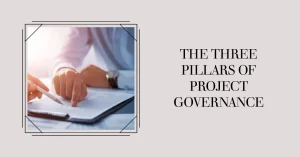To find out how Artificial Intelligence is changing the Project Management landscape, you may enjoy reading this article https://www.shaunstoltz.com/did-artificial-intelligence-just-change-everything-about-project-management/
I. Introduction
Picture this: you’re leading a project with a diverse group of stakeholders, each with their own unique set of expectations, interests, and needs. Navigating these complex relationships can feel like walking a tightrope, but don’t worry – I’ve been there too, and I’m here to help.
The truth is, effective stakeholder management is essential for any successful project. In my years of experience managing projects across various industries, I’ve learned that nurturing strong relationships with stakeholders can be the key to unlocking a project’s full potential. In this blog post, I’ll share some of the most valuable tips and techniques I’ve picked up along the way, so you can confidently navigate the complexities of stakeholder management and set your project up for success.
But first, let’s take a moment to understand why stakeholder management is so crucial. Stakeholders are the lifeblood of any project, as they’re the ones directly affected by its outcome. Their support, or lack thereof, can make or break a project. By cultivating strong relationships with stakeholders, you’ll not only earn their trust and cooperation but also gain valuable insights that can help you make better decisions and drive your project forward.
Now that we’ve covered the importance of stakeholder management, let’s dive into the key skills you’ll need to master in order to effectively manage your project’s stakeholders. In the following sections, we’ll explore how to identify your stakeholders, build meaningful relationships, manage expectations, monitor and adjust engagement, and utilize the right tools and techniques to keep everything on track.
So, buckle up, and let’s embark on this journey to develop your stakeholder management skills and elevate your project management game!
II. Identifying Stakeholders
Before you can effectively manage stakeholders, you need to know who they are. It’s like trying to plan a party without knowing your guests – how can you create the perfect atmosphere if you don’t know their preferences? In this section, I’ll walk you through the process of identifying your stakeholders, so you can set the foundation for strong, lasting relationships.
A. Methods for stakeholder identification
There’s no one-size-fits-all approach to identifying stakeholders, but here are some tried and true methods that have worked for me:
- Brainstorming: Gather your team and list all the people or groups who may be affected by your project. Don’t worry about being exhaustive – this is just a starting point.
- Consult documentation: Review project-related documents, such as project charters, contracts, or organizational charts, to identify additional stakeholders.
- Seek expert advice: Talk to experienced colleagues, mentors, or industry professionals who can provide insights into potential stakeholders you may have missed.
- Analyze past projects: Look at similar projects within your organization or industry to see who was involved. Chances are, you’ll find some common stakeholders.
B. Analyzing stakeholder influence and interest
Once you have your list of stakeholders, it’s essential to understand their level of influence and interest in your project. This will help you prioritize your engagement efforts and tailor your communication strategies. Here’s a simple yet effective method I like to use:
- Influence: Assess the stakeholder’s ability to affect your project, either positively or negatively. Consider factors such as decision-making authority, resources, or expertise.
- Interest: Determine the stakeholder’s level of interest in your project. Are they directly impacted by the project outcomes, or do they have more peripheral concerns?
Using this information, you can create a stakeholder matrix, plotting stakeholders based on their influence and interest. This visual representation will help you quickly identify which stakeholders require the most attention and engagement.
C. Creating a stakeholder register
Now that you’ve identified and analyzed your stakeholders, it’s time to create a stakeholder register. This is like your project’s personal phonebook, containing essential information about each stakeholder. Here’s what to include:
- Name and contact information
- Role in the project or organization
- Level of influence and interest
- Preferred communication methods and frequency
- Key concerns or expectations related to the project
By documenting this information, you’ll have a clear roadmap for stakeholder engagement, helping you ensure that no one falls through the cracks.
Stay tuned for the next section, where we’ll dive into strategies for building strong, trusting relationships with your newly identified stakeholders. Trust me, it’s a game-changer!
III. Building Relationships with Stakeholders
So, you’ve identified your stakeholders and understand their interests and influence. Now comes the fun part – building strong, meaningful relationships with them. This is the cornerstone of successful stakeholder management, and I’m excited to share some of my favorite strategies with you!
A. Communication skills and strategies
Good communication is the foundation of any strong relationship, and your stakeholders are no exception. Here are some key communication skills and strategies to help you connect with your stakeholders:
- Active listening: When engaging with stakeholders, it’s crucial to truly listen to their concerns, opinions, and ideas. This means giving them your full attention, asking clarifying questions, and summarizing what they’ve said to ensure understanding.
- Empathy: Put yourself in your stakeholders’ shoes and try to understand their perspectives, needs, and motivations. By demonstrating empathy, you’ll build trust and rapport with your stakeholders, making them more likely to support your project.
- Clear and concise messaging: When communicating with stakeholders, it’s important to be clear, concise, and focused. Avoid jargon and keep your messages simple and easy to understand, so your stakeholders know exactly what’s happening and how they’re involved.
B. Techniques for establishing trust
Trust is the bedrock of successful stakeholder management. Here are some techniques I’ve found helpful in building trust with stakeholders:
- Transparency: Be open and honest with your stakeholders about your project’s goals, progress, and challenges. This will demonstrate your commitment to their interests and help establish credibility.
- Consistency: Consistently following through on your commitments and keeping stakeholders informed will show them that you’re reliable and dependable.
- Reliability: Deliver on your promises and meet your deadlines. When stakeholders see that they can count on you, they’ll be more inclined to support your project.
C. Engaging stakeholders in the decision-making process
One of the best ways to build strong stakeholder relationships is by involving them in the decision-making process. Here’s how:
- Inclusiveness: Invite stakeholders to share their opinions, ideas, and concerns, and actively consider their input when making decisions.
- Collaborative problem solving: When challenges arise, work together with your stakeholders to find solutions that address their concerns while still moving the project forward.
- Regular updates and feedback: Keep stakeholders informed about project progress, milestones, and any changes that may impact them. Seek their feedback on your plans and adjust accordingly, demonstrating that their input is valued and respected.
In the next section, we’ll explore how to manage stakeholder expectations to ensure smooth sailing throughout your project. Stay tuned!
IV. Managing Stakeholder Expectations
You’ve built strong relationships with your stakeholders, but your work isn’t over yet! Now it’s time to manage their expectations, which is crucial for maintaining support and avoiding potential conflicts. In my experience, these are the keys to successfully managing stakeholder expectations:
A. Setting realistic goals and objectives
One of the biggest mistakes I’ve seen in project management is setting overly ambitious goals that are nearly impossible to achieve. To prevent this, work with your stakeholders to establish clear, realistic goals and objectives for your project. This not only helps manage expectations but also ensures that everyone is on the same page and working towards the same targets.
B. Proactively addressing potential conflicts
Even with the best-laid plans, conflicts can still arise among stakeholders. The trick is to address these conflicts before they escalate. To do this, keep an open line of communication with your stakeholders and encourage them to voice their concerns. When potential conflicts arise, address them head-on and work collaboratively to find a resolution that satisfies all parties involved.
C. Regularly reviewing and adjusting expectations
Projects are dynamic, and circumstances can change along the way. It’s important to regularly review stakeholder expectations and adjust them as needed to align with the current project status. This might involve revisiting project objectives, timelines, or resource allocations. By keeping your stakeholders informed about these changes and involving them in the decision-making process, you’ll foster a sense of ownership and engagement that keeps expectations in check.
In the next section, we’ll discuss how to monitor and adjust stakeholder engagement to ensure your relationships remain strong and your project stays on track. Keep reading – you’re doing great!
V. Monitoring and Adjusting Stakeholder Engagement
You’ve come a long way in your stakeholder management journey, and I’m proud of your progress! Now, it’s time to dive into the ongoing process of monitoring and adjusting stakeholder engagement. This is crucial for maintaining strong relationships and ensuring your project’s continued success. Here’s how to keep your finger on the pulse of stakeholder engagement:
A. Evaluating stakeholder satisfaction
Regularly checking in with your stakeholders to gauge their satisfaction is an essential part of effective stakeholder management. Use informal conversations, surveys, or feedback sessions to gather insights on their experience with the project, their level of involvement, and any concerns they might have.
B. Identifying areas for improvement
Based on the feedback you receive, identify areas where your stakeholder engagement efforts could be improved. This might involve adjusting your communication strategies, providing more opportunities for involvement, or addressing concerns that have been raised. Remember, there’s always room for growth!
C. Adapting engagement strategies based on stakeholder feedback
Once you’ve identified areas for improvement, take action to address them. This might involve refining your communication methods, involving stakeholders more closely in decision-making, or providing additional resources to support their needs. By continually adapting your engagement strategies based on stakeholder feedback, you’ll show your commitment to their success and maintain strong relationships.
In the next section, we’ll explore some valuable stakeholder management tools and techniques that can help you stay organized and streamline your efforts. Keep up the good work – you’re almost there!
VI. Utilizing Stakeholder Management Tools and Techniques
We’ve covered a lot of ground in this stakeholder management journey, and now it’s time to bring it all together with the help of some handy tools and techniques. Over the years, I’ve found that these tools can make a world of difference in staying organized, streamlining communication, and keeping stakeholders engaged. Let me share some of my favorites with you!
A. Stakeholder analysis tools
We touched on stakeholder matrices earlier in this post, and they’re just one example of the many stakeholder analysis tools available. These tools can help you visualize stakeholder influence and interest, prioritize engagement efforts, and track progress over time. Some other popular stakeholder analysis tools include:
- Power/Interest Grid: A simple matrix that plots stakeholders based on their power and interest in the project, helping you identify which stakeholders to focus your efforts on.
- Stakeholder Salience Model: A more advanced analysis technique that considers three key attributes – power, legitimacy, and urgency – to determine stakeholder salience (importance) in your project.
B. Communication and collaboration platforms
In today’s digital age, there’s no shortage of communication and collaboration tools designed to keep your team and stakeholders connected. These platforms can help streamline communication, foster collaboration, and keep everyone in the loop. Some popular options include:
- Slack: A messaging app that allows you to create channels for different topics, share files, and collaborate in real-time.
- Microsoft Teams: A versatile platform that combines chat, video calls, file sharing, and more, making it easy to keep stakeholders engaged and informed.
- Trello: A project management tool that uses boards, lists, and cards to help you organize tasks, track progress, and collaborate with stakeholders.
C. Project management software
Managing a project with multiple stakeholders can be a daunting task, but the right project management software can help you stay organized and on track. These tools typically offer features like task management, resource allocation, progress tracking, and reporting. Some popular project management tools include:
- Asana: A flexible task and project management tool that helps you organize tasks, track progress, and collaborate with your team and stakeholders.
- Basecamp: An all-in-one project management platform that combines to-do lists, file storage, scheduling, and real-time communication to keep your project running smoothly.
- Smartsheet: A powerful platform that combines the simplicity of a spreadsheet with the functionality of a project management tool, allowing you to plan, track, and collaborate on projects with ease.
In the final section, we’ll wrap things up with a real-life case study that demonstrates successful stakeholder management in practice. Don’t miss it – you’re in the home stretch!
VII. A Real-Life Stakeholder Management Success Story
Before we wrap up this blog post, I want to share a real-life case study that showcases the power of effective stakeholder management. This story is from my own experience, and I hope it serves as both inspiration and motivation for you to apply the techniques and strategies we’ve covered throughout this post.
A few years ago, I was brought on board to manage a complex, high-stakes project that involved multiple departments within a large organization. The project’s goal was to streamline operations and improve overall efficiency, but it required significant changes to existing processes and systems, which meant that many stakeholders were apprehensive about the project’s potential impact on their work.
The first step I took was to identify and analyze all relevant stakeholders, creating a comprehensive stakeholder register that included their roles, interests, and influence. I then prioritized my engagement efforts, focusing on building trust and rapport with the most influential and interested stakeholders through regular communication and involvement in the decision-making process.
Throughout the project, I continually monitored and adjusted stakeholder engagement, using feedback to identify areas for improvement and refining my strategies accordingly. By addressing concerns proactively, I was able to maintain stakeholder support and successfully navigate the complex web of relationships involved in the project.
Ultimately, the project was a resounding success, with the organization realizing significant efficiency improvements and cost savings. The key to this success was effective stakeholder management – by building strong relationships, managing expectations, and maintaining open lines of communication, I was able to secure the support and collaboration needed to bring the project to fruition.
As you embark on your own stakeholder management journey, remember that it’s a dynamic, ongoing process that requires patience, empathy, and adaptability. Keep these tips and techniques in mind, and you’ll be well on your way to successfully navigating complex project environments and achieving your goals.
I hope this blog post has been helpful and inspiring for you. Now, it’s time for you to put these stakeholder management skills to the test in your own projects. Good luck, and remember, I’m always here to help you along the way!
VIII. Conclusion and Key Takeaways
Wow, what a journey we’ve been on together! We’ve explored the ins and outs of stakeholder management, and I’m confident that you now have a solid foundation to build upon as you tackle your own projects. As we wrap up this blog post, I’d like to leave you with a few key takeaways that I hope will serve as guiding principles throughout your stakeholder management endeavors.
- Stakeholder management is a dynamic, ongoing process: Remember that building and maintaining strong stakeholder relationships requires constant effort and adaptation. Continuously monitor and adjust your engagement strategies based on feedback, and don’t be afraid to pivot when necessary.
- Communication is key: Clear, open, and empathetic communication is the foundation of successful stakeholder management. Keep your stakeholders informed, listen to their concerns, and involve them in the decision-making process to foster trust and support.
- Build trust through transparency and consistency: Be open and honest with your stakeholders about project goals, progress, and challenges. Follow through on your commitments, and show stakeholders that you’re reliable and dependable.
- Manage stakeholder expectations: Set realistic project objectives, proactively address potential conflicts, and regularly review and adjust expectations to ensure everyone remains on the same page.
- Utilize tools and techniques to stay organized: Take advantage of stakeholder analysis tools, communication platforms, and project management software to streamline your stakeholder management efforts and keep everything running smoothly.
As you apply these principles to your projects, I have no doubt that you’ll experience the power of strong stakeholder management skills in action. And as always, remember that I’m here to support you every step of the way.
Thank you for joining me on this journey, and best of luck in your future stakeholder management endeavors!
Find out more about Shaun Stoltz https://www.shaunstoltz.com/about/
This post was written by an AI and reviewed/edited by a human.



